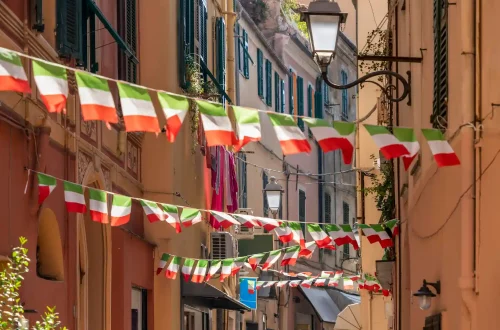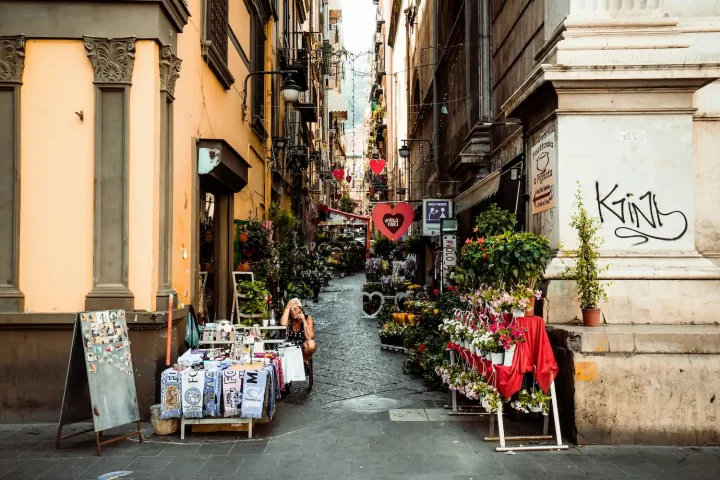Italy has long captivated the imagination of travelers and dreamers alike. From the rolling hills of Tuscany to the bustling streets of Milan, it offers a rich tapestry of culture, cuisine, and history.
But beyond its postcard-perfect charm, Italy is increasingly becoming a practical destination for expatriates and dual citizens—especially those from the United States—seeking a more affordable and fulfilling lifestyle in Europe.
Whether you’re considering relocating, retiring, or investing in property, understanding the cost of living in Italy is essential. For U.S. residents with Italian ancestry or dual nationality, the financial and bureaucratic advantages can be significant.
This guide explores the key differences in living costs between Italy and the United States, and how Italian citizenship can impact your bottom line.
All of the data presented in this article was retrieved from Numbeo.
Italy vs. United States: A cost of living comparison
According to Numbeo, the average monthly cost for a family of four in Italy is approximately $3,638 (excluding rent), while a single person spends around $1,035. In contrast, the same family in the U.S. would spend roughly $4,243, and a single person about $1,194—again, excluding rent. This already highlights a notable cost advantage for those living in Italy.
Let’s break it down by category:
The cost of living in Italy: Housing
Housing is one of the most significant cost differentiators. Renting a one-bedroom apartment in the city center of an Italian city costs around $864, while the same in the U.S. averages $1,733. Outside city centers, Italian rents drop to about $667, compared to $1,428 in the U.S.
Buying property also tends to be more affordable in Italy. The average price per square meter in Italian city centers is $4,905, while in the U.S. it’s approximately $3,251. However, U.S. prices vary widely depending on the city, with hotspots like New York (which costs on average an staggering $16,901!) or San Francisco far exceeding the average.
Regional differences within Italy are also worth noting. Northern cities like Milan and Bologna tend to be more expensive, while southern regions such as Calabria or Sicily offer lower housing costs and a slower pace of life.
Take advantage of specialized assistance to secure your passport for a borderless future.
The cost of living in Italy: Food
Grocery shopping in Italy is generally less affordable than in the U.S., but they offer more fresh produce and local staples. For example:
- A liter of milk costs $1.67 in Italy vs. $1.06 in the U.S.
- A loaf of bread is $2.40 in Italy vs. $3.65 in the U.S.
- A dozen eggs cost $5.11 in Italy vs. $4.37 in the U.S.
Dining out also favors the U.S. A meal at an inexpensive restaurant costs around $17, while in the U.S. it’s closer to $20. A three-course dinner for two at a mid-range restaurant is $82 in Italy, compared to $76 in the U.S.
However Italian food culture emphasizes seasonal, local ingredients, which not only enhances flavor but also is healthier. Weekly markets and small grocers are also common and have a lower cost, and many Italians cook at home more frequently than their American counterparts.
The cost of living in Italy: Transportation
Public transportation in Italy is both accessible and affordable. A one-way ticket costs about $1.99, and a monthly pass averages $43. In the U.S., these figures rise to $2.50 and $65, respectively.
Fuel prices are higher in Italy—about $2 per liter compared to $0.90 in the U.S.—but the need for personal vehicles is often lower due to Italy’s extensive train and bus networks. Urban centers are walkable, and regional trains connect even small towns to major cities.
The cost of living in Italy: Healthcare
Healthcare is one of Italy’s strongest advantages. The country offers a public healthcare system (Servizio Sanitario Nazionale) that provides universal coverage at minimal cost. Citizens and legal residents pay small annual fees or co-pays, and many services are free.
In contrast, healthcare in the U.S. is largely privatized, with high insurance premiums, deductibles, and out-of-pocket expenses. For expatriates or dual citizens, access to Italy’s public system can result in substantial savings.
Private healthcare is also available in Italy and is significantly more affordable than in the U.S., with shorter wait times and high-quality care.
Tax benefits for Italian citizens
Italian citizens returning from abroad and highly qualified foreigners may qualify for tax incentives such as the rientro dei cervelli program, which offers reduced income tax rates for professionals. This can be a game-changer for those planning to work or start a business.
Additionally, Italian citizens benefit from simplified access to public services, reduced bureaucracy, and fewer financial barriers when purchasing property or enrolling in education.
Take advantage of specialized assistance to secure your passport for a borderless future.
How Italian citizenship impacts cost of living
Holding Italian citizenship opens doors across the European Union. You can live, work, and study in any EU country without needing visas or permits. This freedom eliminates costs associated with immigration paperwork, legal fees, and international tuition fees for students.
Citizens also enjoy lower healthcare and education costs, not just in Italy but throughout the EU. For families, this can translate into thousands of euros in annual savings.
How io.citizen can help you obtain Italian citizenship
Navigating the path to Italian citizenship can be complex, but io.citizen offers comprehensive support to make the process seamless. From analyzing your ancestral documents to guiding you throughout your application process, our team ensures every step is handled with care.
Italy offers more than just scenic beauty and cultural richness—it presents a financially viable alternative to life in the United States. With lower living costs, robust public services, and the advantages of EU citizenship, it’s no wonder more Americans are exploring the possibility of calling Italy home.
Whether you’re drawn by heritage, lifestyle, or opportunity, understanding the cost of living is the first step toward making an informed and rewarding move. And with the right support, the transition can be smoother than you ever imagined.






